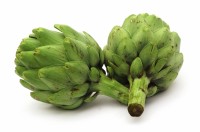
December 15- December 21, 2013
Market Outlook
Lettuce:
The Iceberg market is steady with good supplies and quality out of Yuma.
Leaf:
Leaf market is steady with good supplies and quality out of Yuma.
Broccoli:
Broccoli supplies are short again due to cooler weather. Shortages are projected for the next few weeks.
Cauliflower:
The cauliflower market is turning around, with projected outlook similar to broccoli.
Carrots:
Carrot market will be a little stronger for next week. Quality remains good.
Celery:
The Celery market is higher with holiday pull beginning and with good supplies out of Oxnard. Quality has been very good.
Strawberries:
We have transitioned to Florida berries for the Winter season. Quality has been fair to good.
Potatoes:
The market on cartons has not changes much in the past couple of weeks and looks like no change for next week. Quality has been good.
Onions:
Market on onions once again has gone up slightly and will continue into January remaining very strong.
Citrus:
Lemon and orange market is stronger due to very cold weather in the growing region. Shippers are struggling to come up with small fruit. 113’s and 138’s are particularly tough to find.
Cucumbers:
Cucumber market has tightened up this week with some cool nights in the South. Availability will be tight for next week.
Peppers:
Pepper market is higher due to cooler weather.
Tomatoes:
Tomato market is steady on rounds, and romas. Grapes and cherries are more abundant and the market is lower.
California is experiencing unseasonably cold temperatures in all growing areas. The desert region is seeing freezing temperatures at night which delays harvest start time in the morning due to ice in the fields. Shippers are advising us that we will likely see some epidermal peel and freeze damage on lettuce and leaf items in the weeks to come.
Feature of the Week
This week Primo is featuring artichokes. As vegetables go, the Artichoke is among the most fascinating visually. It is as beautiful as it is delightful to eat. You may be interested to know that the Artichoke is actually the bud of a plant from the thistle family and at full maturity, the plant grows to a width of about six feet and a height of three to four. If not harvested from the plant, the bud will eventually blossom into a beautiful, blue-violet flower, which is not edible. The bud contains the Heart, the delightful, meaty core of the Artichoke, and is topped by a fuzzy center, or choke, which is surrounded by rows of petals, which protect the Artichoke Heart. With their tiny thorns, the Artichoke’s petals reveal their thistle heritage.
Recipe of the Week
HOT ARTICHOKE SPINACH DIP
1/2 cup spinach (frozen)
1 cup artichoke hearts
8 oz cream cheese
1/2 cup Parmesan cheese
1/2 tsp crushed red peppers
1/4 tsp salt
1/8 tsp garlic powder
dash pepper
Finely chop spinach and artichoke. Boil spinach and artichokes in 1 cup water on medium heat for 10 minutes. Drain well.
In a microwave-safe bowl, microwave the cream cheese for one minute or enough to soften. Add all ingredients together and serve.
May be kept in a slow cooker to keep warm. Recipe may be doubled.
Fun Facts of the Week
- California produces 100% of the United States artichoke crop, with Castroville, California calling itself the “Artichoke Center of the World.”
- In 1947 Marilyn Monroe, then still going by her given name Norma Jean, was crowned Castroville’s first Artichoke Queen.
- The artichoke is technically a flower bud that has not yet bloomed.
- The Greeks and Romans considered them to be an aphrodisiac.


